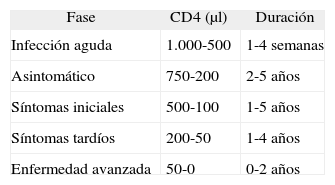El virus de inmunodeficiencia humana (VIH) es causante del síndrome de inmunodeficiencia adquirida, o sida, una afección del sistema inmunológico que, por ahora, aún no siendo mortal, es crónica y afecta a la calidad de vida de los pacientes.
Sin duda el tratamiento fisioterapéutico es una manera de mejorar la calidad de vida de los pacientes. En este sentido y dado que uno de los factores importantes en el seguimiento de la evolución de la enfermedad es la fatiga, todos aquellos mecanismos que podamos establecer como fisioterapeutas para disminuir esta sintomatología ayudarán al bienestar del paciente. Para minimizar y prevenir los efectos de la fatiga en el organismo, se vienen empleando distintos agentes físicos y procedimientos fisioterapéuticos: crioterapia, electroestimulación, masoterapia e incluso otras técnicas llamadas “alternativas”.
Se ha sugerido que el ejercicio físico (aeróbico y de resistencia muscular) puede ser beneficioso y mejorar la calidad de vida de sujetos con sida, pero es necesario llevar a cabo más investigaciones para determinar los parámetros óptimos de trabajo; así, en función del estado vital del paciente, se podrán establecer los protocolos de ejercicio físico adecuados, dirigidos por profesionales de la fisioterapia.
The human immunodeficiency virus (HIV) is a causal factor of the acquired immunodeficiency syndrome (AIDS), an immune system disease that is presently not mortal but is a chronic disease that affects that patient's quality of life.
Undoubtedly, physical therapy can improve the patient's quality of life. In this regards and given that one of the important factors in the follow-up of the disease course is fatigue, all those mechanisms that we can establish such as physical therapy to diminish this symptom, will help to improve the patient.
In order to minimize and to prevent the effects of fatigue on the body, different physical agents and physical therapy procedures have been used: cryotherapy, electrical nerve stimulation, massage, and even other so-called “alternative” techniques.
It has been suggested that physical exercise (aerobic and muscular resistance) can be beneficial and improve the AID patient's quality of life. However, more research is needed to determine the ideal work parameters. Thus, based on the vital state of the patient, the best exercise protocols, directed by physical therapy professionals, is to establish adequate physical exercise protocols.
Artículo
Si ya tiene sus datos de acceso, clique aquí.
Si olvidó su clave de acceso puede recuperarla clicando aquí y seleccionando la opción "He olvidado mi contraseña".Comprando el artículo el PDF del mismo podrá ser descargado
Precio 19,34 €
Comprar ahora








